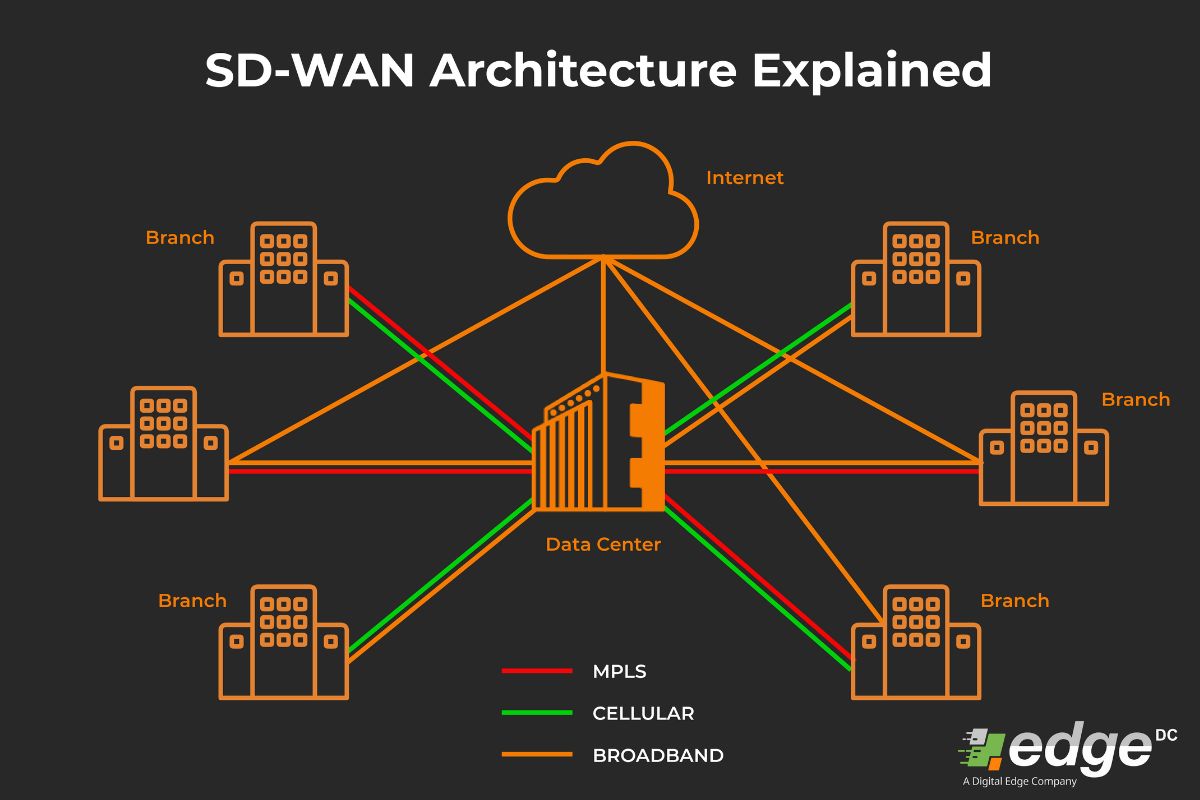What is SD-Wan? Its Definition, How It Works and its Benefits

For an organisation that has branch offices spread throughout the region, an interconnected, secured, and reliable network is one of the challenges that must be resolved. To overcome this, wide-area network (“WAN”) technology emerged with all its advantages and conveniences.
However, the innovation doesn’t stop there, if most of us are currently still using WANs, it is recommended to start getting to know a new technology called software-defined wide area network (“SD-WAN”), which has much greater improvement than traditional WANs.
In this article, we will share with you to get to know what SD-WAN is, how it works, and what are the benefits of using this technology.
Definition of SD-WAN
SD-WAN is an approach used to optimise and manage a vast area network that is available in software that can work automatically to control the network.
This software is also commonly referred to as Software Defined Networking (“SDN”) whose existence is used to replace Traditional WANs, such as connecting all networks owned by the company, including Data Centers located in several locations.
Through SD WAN, we can create a more straightforward and more automated network infrastructure which is often known as Zero Touch Provisioning (“ZPT”).
So, in general, we can define SD-WAN as a network technology that can be used to optimise and manage a Wide Area Network (WAN) by utilising software to manage traffic in a simpler and more effective way.
Read more: What is Network Peering? Definition, Types, and Benefits
Through SD-WAN, we can integrate several networks, starting from wireless networks, and internet connections, to Multi Protocol Label Switching (“MPLS”) which can be tailored to the needs of the organisation.
How SD-WAN Works
Although this technology is presented to replace traditional WANs, the way of working between SD-WAN and traditional WAN is very different. Traditional WANs are generally made with exclusive circuits where this process more often utilises hardware, which means it requires a lot of hardware to connect networks in each different location.
SD-WAN does not work this way, it will start the process by utilising tunnelling from an existing network infrastructure which makes the process and requirements simpler.
SD-WAN is available in the form of software that can be connected to the cloud and can be configured to connect every network owned by the company, even administrators can determine the rules regarding data traffic.
These interconnected networks will be identified and grouped into sections, then the data exchange from each network can be monitored through a centralised control system to direct to SaaS or IaaS. Not only that, we can also direct this traffic to cloud computing which we can later access in a digital medium.

SD-Wan can also monitor several things such as latency to network security. Through mechanisms like this, SD-WAN can work automatically to determine the most effective path for sending data, which will ultimately affect speed and bandwidth consumption.
Benefits of Using SD-WAN
SD WAN is a technology that can be applied to organisations, whose business relies heavily on the Cloud. Not only fast access, SD-WAN will also ensure access from each network is carried out securely, with the least possible risk. Furthermore, here are some of the benefits of SD-WAN.
1. Easy to operate
When devices are managed centrally, and routing is done based on application policies, a network admin can make changes or create rules related to network security, which best suits the needs in real time. Moreover, SD-WAN supports zero-touch provisioning, which will eventually make the process run automatically and help organisations to overcome complex system deployments to lower operational costs.
2. Flexibility in Choosing Internet Providers
SD-WAN allows companies to use several different ISPs, which in turn makes the selection of internet providers flexible, for example, determined by price or connection services. We can even choose different ISPs at each location, which will make the network more reliable because when one ISP connection is lost, we can still use ISPs from other locations. This creates greater redundancy needed to ensure minimal downtime in operational activities.
3. Optimal Performance
The freedom to create the most suitable rules, and the work system that is carried out automatically, will make SD-WAN able to maintain the most optimal performance while still in accordance with the SLA of each application.
4. Low Cost
Because SD-WAN already supports and can integrate several types of networks, we will have the convenience of choosing the cheapest network, for example from MPLS to broadband. Not only that, maintenance costs on SD-WAN are also much cheaper because the system used is not as complex as a traditional WAN.
5. Better Security
Like a WAN, SD-WAN has also been equipped with a capable security system, one of which is by providing network access to authorised devices. This authorised system will ultimately make the network avoid DDoS, malware, hacking, and data theft.
Read More: 5 EDGE DC Services for Data Center in Indonesia
The earlier description of SD-WAN illustrates its potential as an optimal solution for enhancing the performance of corporate networks and remote branches. Leveraging its advanced operational approach, SD-WAN provides various benefits and can be applied to several applications or sites.


